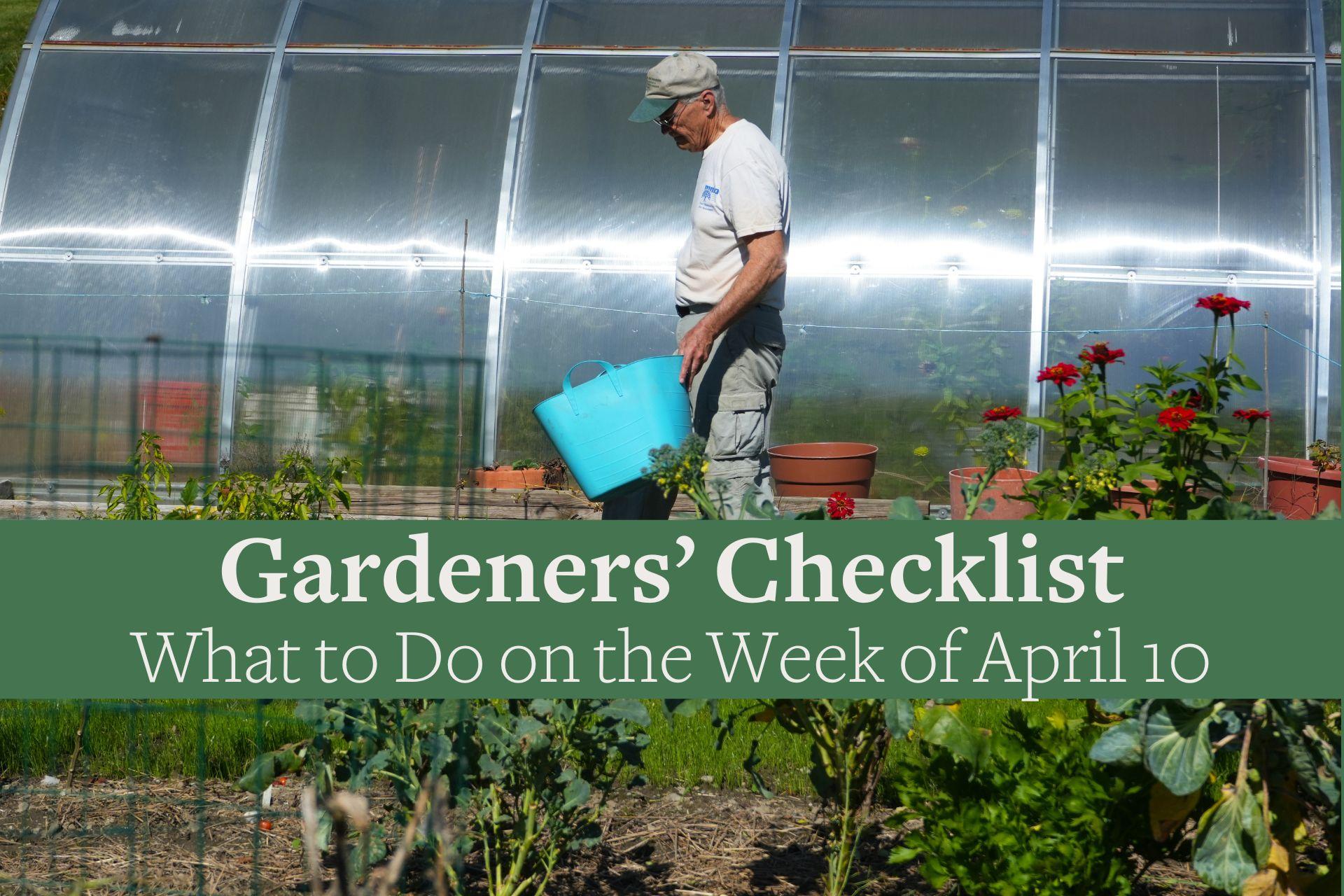You are here
Gardeners Checklist: Here Is What to Do on the Week of April 10
Gardeners Checklist: Here Is What to Do on the Week of April 10
By Ron Kujawski
* Begin sowing seeds of cool season crops now that soils in most locations are dry enough to be tilled. Work in organic matter before doing any planting. Organic matter can be compost or aged manure, not necessarily from an aged horse or aged cow. Seeds to sow now include most leafy greens, including leaf lettuce, spinach, arugula, radicchio, kale, and Swiss chard, and root crops such as carrots, radishes, and turnips.
* Sow seeds of the three types of garden pea. There’s the English or garden pea of which the seeds are eaten; the edible podded or snow pea of which the pods are eaten; and the sugar snap pea where the fleshy pods and enclosed seeds are eaten. Some folks have already planted their peas but I typically wait until soil temperatures are about 50 degrees F. At that temperature, I get the best germination rate. There are many methods of planting peas, but we have finally settled on planting low-growing varieties in double rows spaced six to eight inches apart. Tall varieties are planted in single rows on both sides of our pea fence or trellis.
* Transplant onion seedlings to the garden. Onions can also be started from sets (small onion bulbs) or from seed sown directly into the garden. The latter we do only for bunching or green onions. For our main crop, we prefer planting onion seedlings rather than sets. Onions grown from sets mature earlier but do not store as well as onions grown from seedlings.
* Place floating row covers over early sown seeds and transplants. Row covers provide some protection against light frosts, though cold hardy crops mentioned above can tolerate frost. Row covers also warm soils and hasten seed germination, and protect young plants from brisk winds.
* Seed bare patches in lawns. Moist, warm soils will speed the germination of grass seed and allow the seedlings to fill in the bare spots before most weeds have a chance to invade.
* Set up rain barrels now beneath downspouts. Yes, I know that it is early spring and rainfall has been plentiful but as a friend of mine once said, “The rain barrel is fullest when you need it the least.” The corollary to that is, “The rain barrel is least full when you need it the most.” By allowing rain barrels to fill up now, there’ll be water for your gardens or patio pots this summer when rains are less frequent but water is needed the most.
Not many home gardeners plant potatoes. Surely, limited space is one of the factors, but it’s a shame to miss out on one of the great pleasures of growing your own: boiled new potatoes, tossed in butter and covered with chopped fresh parsley. Yum…. I’m drooling on my keyboard at the thought. Potatoes indeed take up a lot of garden space if a large harvest for winter storage is the goal. However, a lot of new potatoes can be had from just a short row of ten to fifteen feet. New potatoes are small, immature potatoes. One way to increase the yield of new potatoes is to space the sections of seed potato about six to eight inches apart when planting. The resulting potatoes will be small, just right for boiling, and plentiful.
Ron Kujawski began gardening at an early age on his family's onion farm in upstate New York. Although now retired, he spent most of his career teaching at the UMass Extension Service. He serves on Berkshire Botanical Garden’s Horticulture Advisory Committee. His book, Week-by-Week Vegetable Gardener’s Handbook, is available here.
Help Our Garden Grow!
Your donation helps us to educate and inspire visitors of all ages on the art and science of gardening and the preservation of our environment.
All donations are 100 percent tax deductible.



